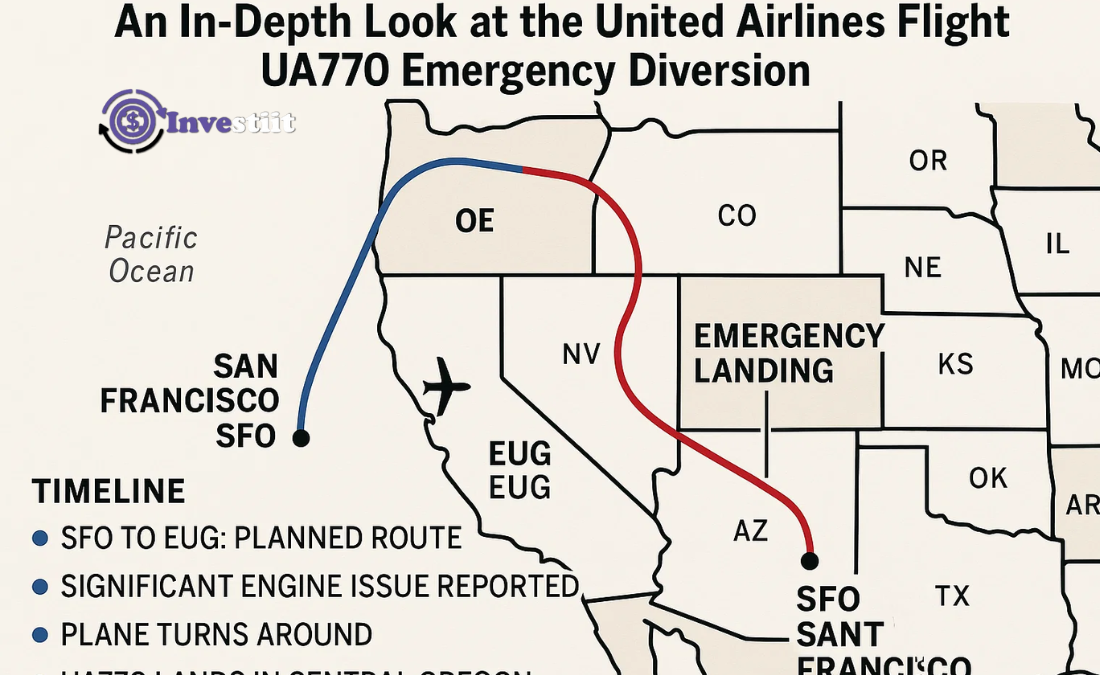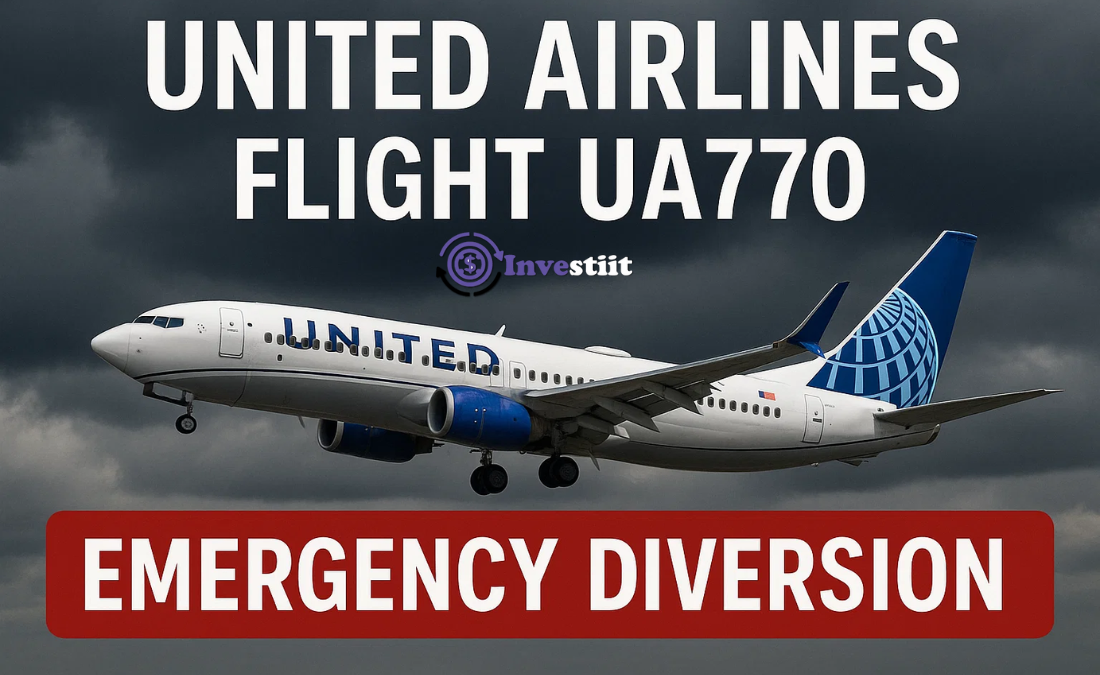The phrase “emergency diversion” strikes a chord of anxiety in the heart of any traveler. It signifies an unexpected disruption, a deviation from the planned course, and an acknowledgment of an abnormal situation miles above the ground. One such event that captured public attention was the United Airlines Flight UA770 emergency diversion. This incident serves as a powerful case study in modern aviation safety, highlighting the intricate interplay between technology, human expertise, and rigorous emergency protocols. While the event concluded safely without injury, its unfolding, from the first sign of trouble to the successful landing on an alternate runway, offers a compelling narrative of professionalism under pressure.
Flight UA770 was a scheduled international service, a long-haul journey connecting a major hub in the United States with a destination in Europe. On a seemingly routine day, the Boeing 767 aircraft, carrying passengers and crew, climbed to its cruising altitude, settling into the long flight over the Atlantic. For those on board, the initial hours were likely characterized by the normal rhythms of air travel: meal service, in-flight entertainment, and the gentle hum of the engines. However, in the cockpit, the situation was about to change dramatically. The initiation of the United Airlines Flight UA770 emergency diversion was not triggered by a single, catastrophic failure, but rather by the cautious response to a potential system anomaly.
The Cause: Unpacking the Technical Anomaly That Prompted the United Airlines Flight UA770 Emergency Diversion
The specific catalyst for the United Airlines Flight UA770 emergency diversion was an indication of a potential issue with the aircraft’s pressurization system. Modern commercial aircraft are engineering marvels, designed to maintain a comfortable and breathable cabin atmosphere despite flying at altitudes where the outside air is too thin to support human life. The pressurization system is critical, and its failure can lead to a rapid decompression, a serious emergency that requires immediate descent to a safer altitude.
In this instance, the flight crew received an automated alert or indication suggesting an irregularity with the system’s performance. It is crucial to understand that aviation safety is built on a foundation of redundancy and caution. The alert may not have indicated an imminent failure, but it signaled a potential vulnerability that could not be ignored. The pilots are trained to treat such warnings with the utmost seriousness. Their primary mandate is the safety of everyone on board, and proceeding across a vast ocean with a potentially compromised pressurization system was not an option. This decision-making process exemplifies the “better safe than sorry” philosophy that is deeply embedded in airline culture. The crew’s swift action to initiate the United Airlines Flight UA770 emergency diversion was a direct and professional response to this technical data, prioritizing caution over convenience.
The Response: Cockpit Crew Coordination During the United Airlines Flight UA770 Emergency Diversion
The moments following the initial alert are where years of training and simulation come to the fore. The declaration of the United Airlines Flight UA770 emergency diversion activated a well-rehearsed sequence of actions inside the cockpit. The flight crew operates as a cohesive unit, with clearly defined roles during an emergency. The Captain, as the ultimate authority, makes the final decisions while managing communication with air traffic control. The First Officer assists with navigating, running checklists, and managing the aircraft’s systems.
Their first step was to declare an emergency with air traffic control. Using a specific phraseology, they communicated their situation, intention, and needs. This declaration grants the flight priority over all other air traffic and ensures they receive immediate assistance. Air traffic controllers then began clearing a path, coordinating with other aircraft to provide UA770 with a direct route to the nearest suitable airport. Meanwhile, inside the cockpit, the pilots would have run through a series of checklists designed by Boeing and United Airlines specifically for pressurization issues. These checklists guide them through steps to diagnose the problem, secure the system, and prepare the aircraft for an emergency descent and landing. The calm, methodical execution of these procedures is what transforms a potential crisis into a manageable situation. The professionalism displayed during the United Airlines Flight UA770 emergency diversion was a testament to the rigorous training standards upheld by United Airlines and the aviation industry as a whole.
Passenger Experience: Calm and Control Aboard United Airlines Flight UA770 During the Emergency Diversion
For the passengers seated in the cabin, the initiation of the United Airlines Flight UA770 emergency diversion was likely a moment of confusion and concern. The first sign might have been an unusual change in the engine sound or the sensation of the aircraft beginning to descend. Shortly thereafter, the calm and measured voice of the Captain would have echoed through the cabin. A critical component of managing an in-flight emergency is effective communication with passengers. The crew is trained to be transparent yet reassuring, providing necessary information without inciting panic.

The Captain likely made an announcement informing everyone that the aircraft was being diverted as a precautionary measure due to a technical issue, emphasizing that the situation was under control and that the crew was trained to handle it. The flight attendants, the unsung heroes of such events, would have begun preparing the cabin for a potential emergency landing. This involves securing the galley, ensuring all carry-on luggage is stowed, and briefing passengers on safety positions. Their demeanor is key; by remaining calm and authoritative, they project a sense of control that helps keep passengers settled. The successful management of the human element during the United Airlines Flight UA770 emergency diversion is as important as handling the technical aspects, and it reflects the comprehensive safety culture that extends to every member of the crew.
The Landing: A Successful Conclusion to the United Airlines Flight UA770 Emergency Diversion
The designated diversion airport, which would have been selected based on factors like runway length, weather conditions, and available emergency services, welcomed the aircraft. As Flight UA770 approached, the ground would have been a hive of activity. Airport emergency services, including fire trucks and ambulances, were likely placed on standby along the runway—a standard precaution known as a “full emergency” standby when an aircraft lands with a declared issue.
The landing itself was executed flawlessly. The pilots, having managed the aircraft’s weight and configuration during the descent, guided the Boeing 767 onto the runway for a smooth touchdown. The safe landing marked the successful conclusion of the United Airlines Flight UA770 emergency diversion. Once the aircraft taxied to a gate or a remote parking area, passengers disembarked safely. They were then met by airline representatives who arranged for accommodations, rebooking on alternative flights, and provided any necessary support. The aircraft itself was taken out of service for a thorough inspection and repair by maintenance engineers to diagnose and fix the pressurization indication fault before it could return to flight operations.
Conclusion: The Lessons Learned from the United Airlines Flight UA770 Emergency Diversion
The United Airlines Flight UA770 emergency diversion was, in the end, a non-event in terms of casualty, but a significant event in terms of demonstrating the robustness of modern aviation safety. It was not a story of disaster averted at the last second, but rather one of potential danger identified and neutralized through proactive, professional action. The incident underscores several key pillars of flight safety: the sophistication of aircraft monitoring systems that provide early warnings; the invaluable role of highly trained pilots who can interpret data and execute complex procedures under pressure; the importance of cabin crew in managing passenger safety and morale; and the seamless coordination between the flight deck, air traffic control, and ground emergency services.
Ultimately, the United Airlines Flight UA770 emergency diversion stands as a powerful reminder that the extraordinary safety record of commercial aviation is not accidental. It is the direct result of a culture that prioritizes caution, invests relentlessly in training, and learns from every incident, no matter how minor it may seem. For the passengers, it was an unexpected and undoubtedly unsettling interruption to their journey. But for the industry and observers of aviation, it was a textbook example of the system working exactly as designed, ensuring that what could have been a headline-making tragedy remained instead a story of quiet, professional competence.


